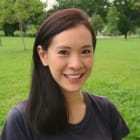Advertisement
Her spinal curvature condition shaped her spine and her life. After enduring her secondary school years in a thick plastic brace and having had three major operations, president of Scoliosis Support Singapore Jasmine Liew tells CNA Women how it inspired her to run a support group for 20 years.
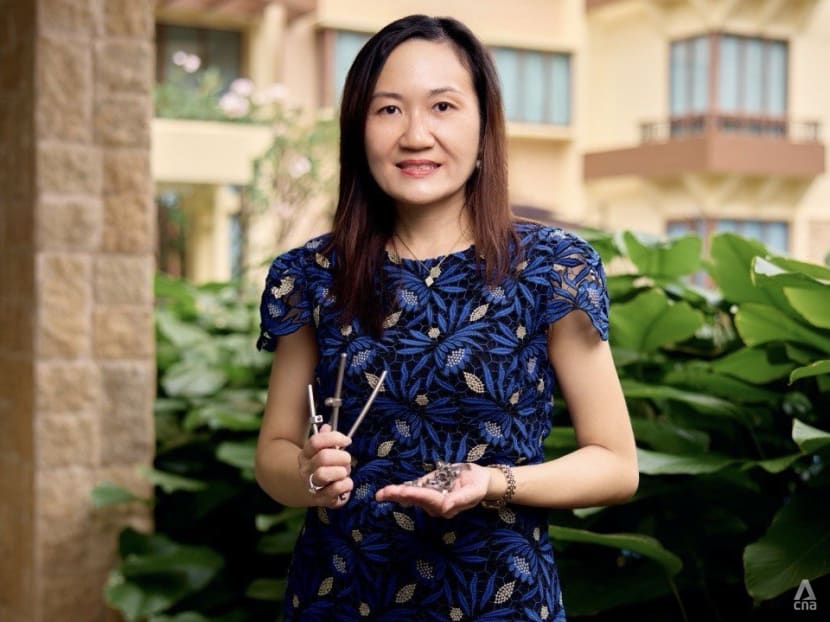
Jasmine Liew holding the titanium implants, rods and screws used in her spinal fusion surgery. They were later removed due to an infection. (Photo: CNA/Dillon Tan)
New: You can now listen to articles.

This audio is generated by an AI tool.
About three in 100 adolescents in Singapore are affected by scoliosis, an abnormal spinal curvature that is far more common in girls than boys.
Among them is Tiffany of Girls’ Generation, and Britain’s Princess Eugenie. The latter went for corrective surgery at the age of 12.
Researchers don’t quite know what causes adolescent idiopathic scoliosis (scoliosis in late childhood or adolescence). Many mistakenly attribute scoliosis to bad posture, heavy school bags or calcium deficit, said Jasmine Liew, president of Scoliosis Support Singapore, although a 2020 study by the Singapore General Hospital and National Neuroscience Institute found that it could be linked to the brain.
Misunderstood and often unseen, many patients struggle alone with uncomfortable braces and painful surgery during their most vulnerable teenage years.
Having walked this difficult road in her teens, 45-year-old Liew co-founded the non-profit scoliosis support group and has been running it for 20 years.
Her message to teens with severe scoliosis: “I was once like you. I can give you some hope.”
“I WAS LIKE A TILTED TREE”
Liew was 13 when her mother’s friend noticed that her body was like a “tilted tree”. She saw a doctor who diagnosed her with scoliosis.
At that time, her spine curvature was moderate but a year later, it progressed and she had to wear a brace and do physiotherapy.
“In those days, the brace was like a plastic corset. It was thick, heavy and hot in our humid weather. It was hard to breathe,” she recalled.
Liew kept the brace on for 18 hours each day, wearing it under her clothes.
“You look plumper, you are a bit rigid, and have a hunchback where the brace is protruding. You cannot take part in certain sports and activities,” she said.
“My self-esteem was affected. I thought I was not as good looking as others. I felt very sad and depressed. I felt like an alien.”
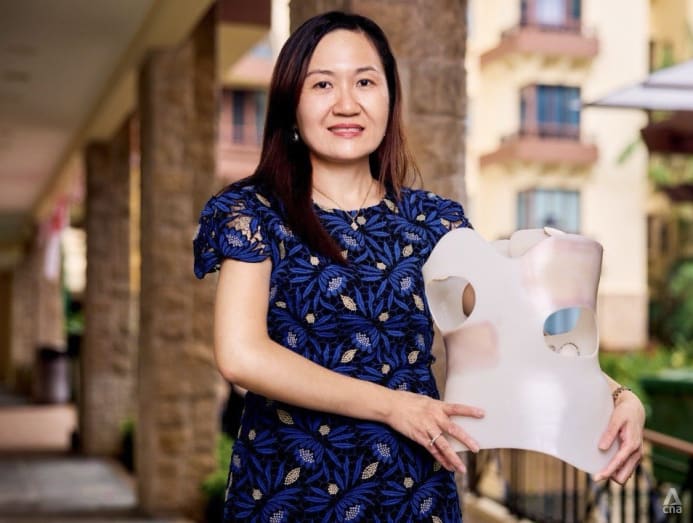
Since scoliosis tends to increase during growth spurts when rapid growth exacerbates the asymmetrical growth of the spine, her doctor visits usually came with bad news.
“In the past, doctors were not so patient-friendly. Instead of encouraging me, my doctor would always scold me, and say I didn’t wear my brace or was not religious about physiotherapy,” she said.
Her curvature progressed from moderate to severe and her spine became a visible “S curve” by the time she was 16.
You look plumper, you are a bit rigid, and have a hunchback where the brace is protruding.
Severe scoliosis can squeeze the heart and lungs, and impact their ability to fully function, said Liew. To prevent health problems and correct her physical appearance, Liew went for spinal fusion surgery after her O-Level exams.
The surgery involves fusing together the curved vertebrae (the bones that stack up to form the spine) into a solid bone to stop growth in the abnormal segment of the spine and prevent the curvature from increasing.
This involves a bone graft where small pieces of bone are placed in between the vertebrae to be fused. Metal rods hold the spine in place until the fusion happens. After the fusion, the rods are no longer necessary, but are not usually removed unless they cause complications.
It was a major surgery, and the 16-year-old was understandably afraid.
“Those were the days before Facebook. No one we knew had scoliosis,” Liew recalled.
Liew’s mum asked around and found a friend of a friend in her thirties who had undergone this surgery. “She came to meet me and showed me that it was possible to lead a normal life after surgery. That gave me a lot of hope and confidence. I knew that I was not alone,” Liew said.
Putting aside the fear, she underwent the eight-hour surgery.
“I cried post-surgery because of the immense pain. I woke up feeling that there was a block of wood on my back. I couldn’t turn. I struggled to breathe. I had to learn how to walk again,” she said.
But the surgery was successful and reduced her scoliosis to a mild curvature.
“I told myself, this is my life – I am reformed and transformed. This rod will be my forever companion,” she said. “If you are more accepting of the condition, you will be able to recover faster.”
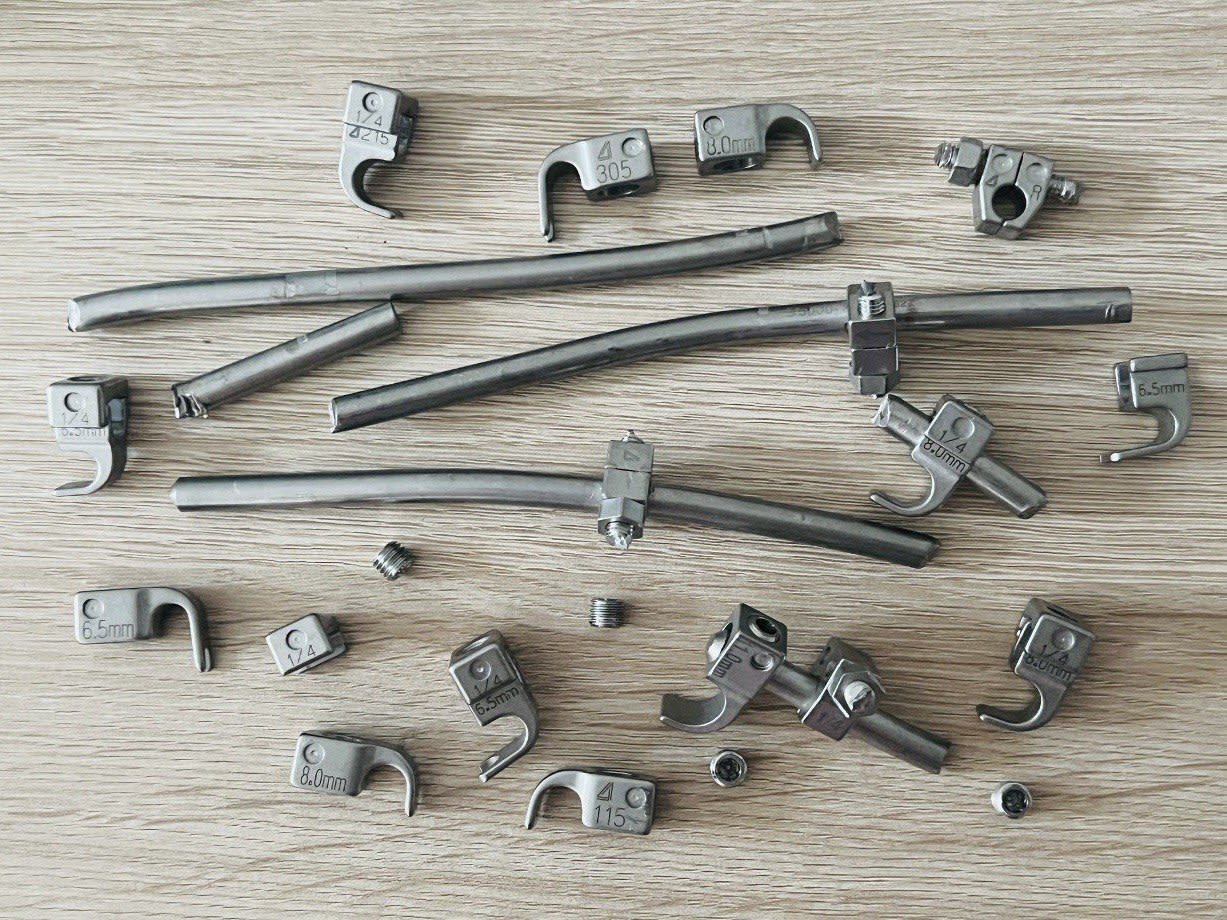
Liew loved her new life without a brace. Unfortunately, in 2004, at the age of 25, she slipped and fell, which led to an infection.
“Due to the fall, bacteria may have entered through my spinal surgical scar, leading to biofilms [communities of bacteria and microorganisms] that formed on my titanium implants.
“These biofilms were resistant to the body’s immune response and antibiotics.”
She underwent a four-hour surgery to clean the wound, but it did not help. The infection came back two weeks later.
To resolve the infection, Liew had a third surgery to remove the metal rod entirely, leaving only the hooks embedded in her spinal cord and a long scar across her back as a reminder of her ordeal.
JOURNEYING WITH SCOLIOSIS
Even though her scoliosis stablised after the surgery, Liew felt deeply for other teenagers struggling with scoliosis as the condition had disrupted her teenage years.
So she went for a small informal scoliosis gathering which she found out about through a nurse, met a fellow patient, and founded Scoliosis Support Singapore with him in 2004.
From there, she met other patients through word of mouth and referrals from healthcare professionals. Along with her co-founder, they began to offer support for more severe cases that require a brace or surgery, via phone calls and home visits.
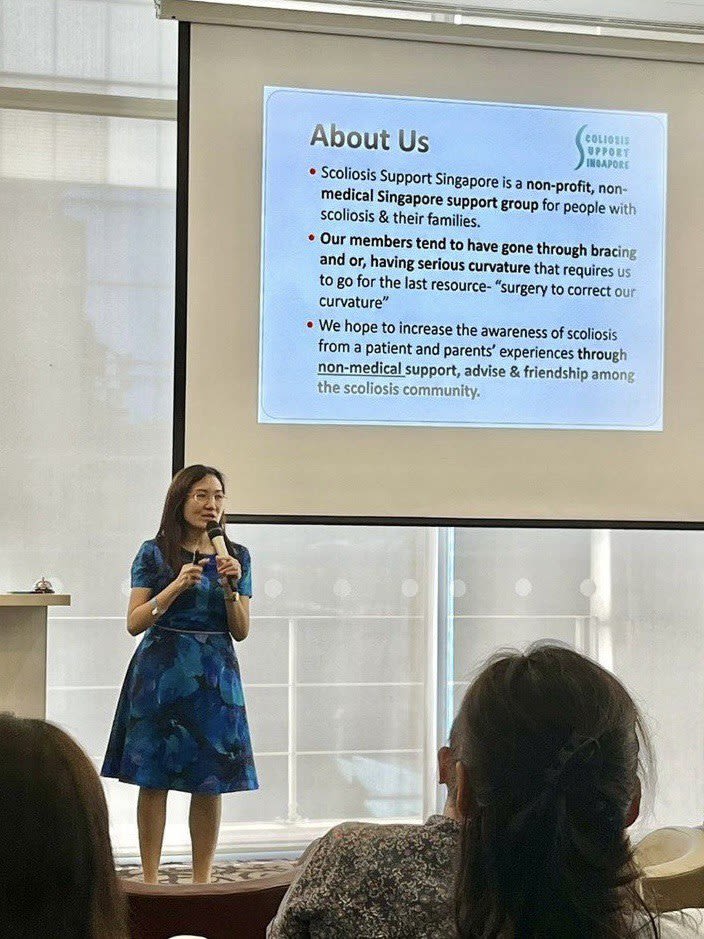
Over the past two decades, the support group has grown to 1,700 members on Facebook.
In addition to informal gatherings, the group does live sharing on Zoom and organises yearly talks and gatherings at the National University Hospital (NUH).
Since COVID-19, the support group has stopped doing home visits. But patients and parents come together at events and on Facebook to ask questions, share challenges, struggles and success stories.
“Unlike Googling, it is easier to find more local-centric answers here, such as recommendations for doctors, what the process is like, what to avoid, and answers to pre-surgery, surgery and post-surgery questions,” Liew said.
Though braces have improved significantly in terms of comfort, many of the challenges teenagers face with wearing the brace for long hours remain similar, said Liew.
“I hear of more bullying cases today than before. We have cases of scoliosis peers in younger age groups whose friends used a pencil to poke their brace. I have also heard of name-calling. There are many scoliosis patients with sadness, anxiety, despair and low self-esteem.” Having a community helps patients feel less alone.

Besides moderating the page, Liew, who is a solopreneur in training and consultancy and a part-time doctorate candidate, helps to match people with similar conditions for better support, via Facebook.
At the group’s NUH talk in March, she noticed more people above 50 with degenerative scoliosis – scoliosis that develops in adulthood because of spinal degeneration. Some of these older sufferers do not have Internet access and are not connected to Facebook.
Liew was recently referred to a patient in his seventies, who could not speak English and was living alone. “I shared my perspective, but I don’t have anyone from his age group who can share their experience with him,” Liew said, adding that most of her members are in their twenties through forties.
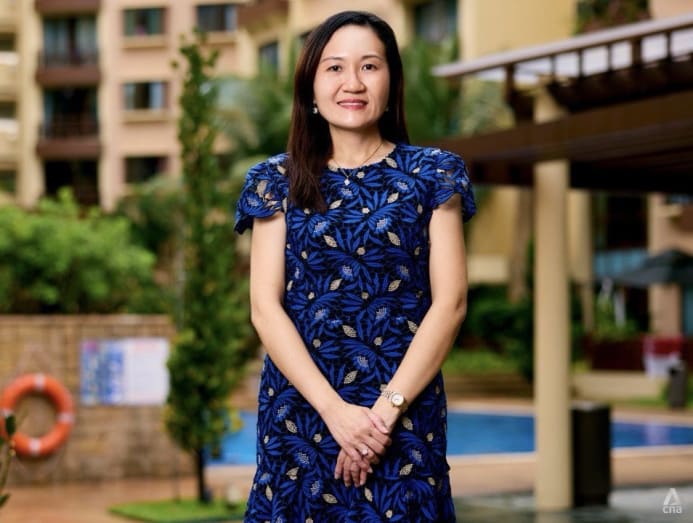
Since scoliosis has a different impact on different age groups, Liew hopes that more seniors, young patients and their parents will share their experiences like she has.
“It is about having that shared connection with people who have the same experience. When you say something, it resonates,” she added.
This is also why Liew has dedicated 20 years to the support group.
“I no longer need to be in a support group because I don’t have the metal implant anymore. But it is not for myself. I want to give back because I realise that many are still struggling with scoliosis alone,” she said.
CNA Women is a section on CNA Lifestyle that seeks to inform, empower and inspire the modern woman. If you have women-related news, issues and ideas to share with us, email CNAWomen [at] mediacorp.com.sg.
























